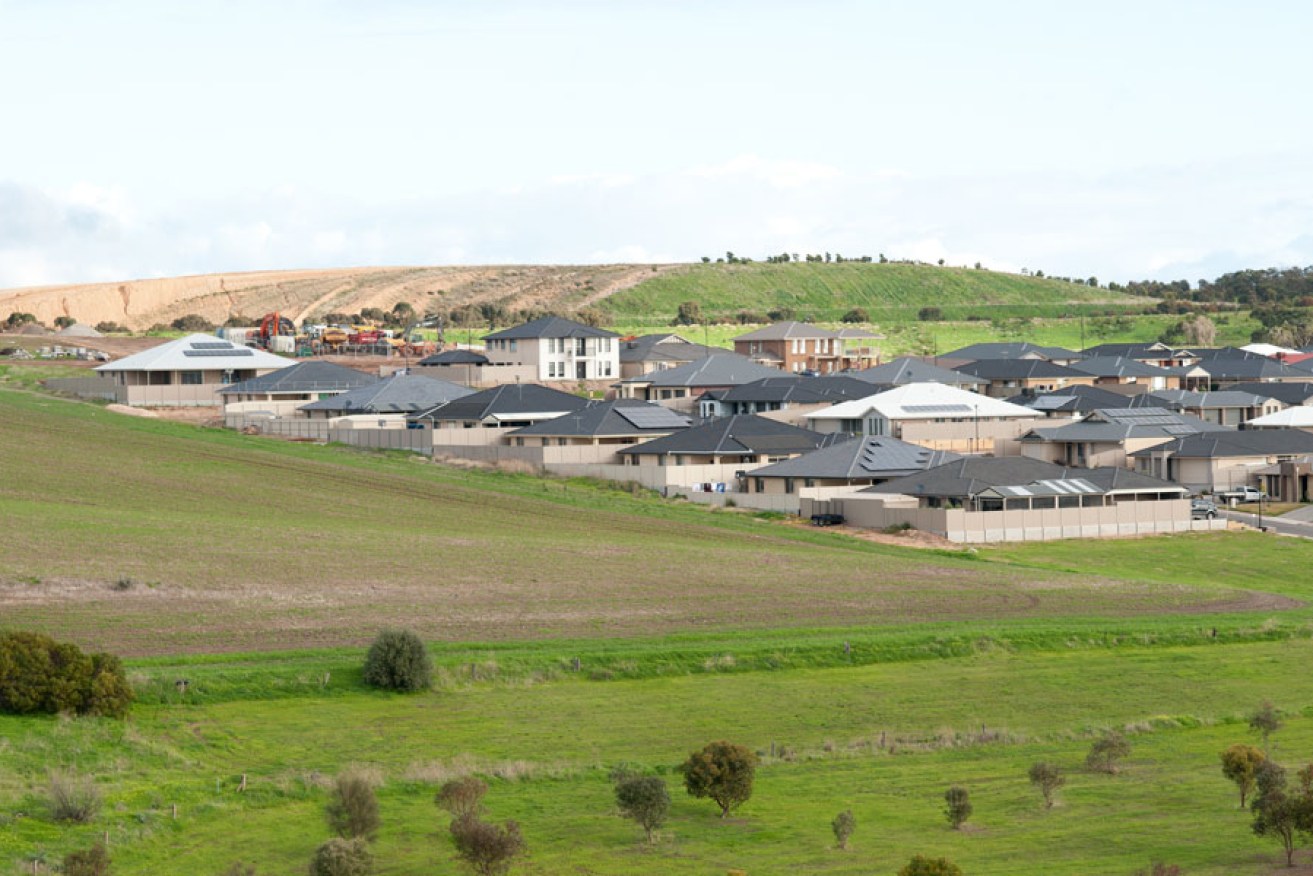Adelaide’s planning debate needs maturity

Urban development on Adelaide's southern suburban fringe. Photo: Nat Rogers/InDaily
Town planners and governments must be more accessible to communities, because as the great bard William Shakespeare said: ‘What is the city, but the people?’
Communities, governments and planning officials in Adelaide need to engage in a mature discussion about increased density, different types of built form and Adelaide’s planning system overall.
Knee-jerk reactions to development proposals and “top-down” imposition of neighbourhood planning regimes will not assist Adelaide to remain a successful modern city.
People are rightly passionate about the places in which they live.
Communities’ intimate local knowledge of how their local spaces function and how they can be improved is invaluable in planning and designing better urban areas.
Local communities must therefore have opportunities to participate in the determination of the key elements of design and finish, which will ensure new developments complement the existing urban environment.
We must also accept, however, that it is not equitable for existing communities to refuse any change to built form and design so that housing choice and density become “somebody else’s problem”.
Trust is a vital element in these discussions, so government and the design and development industries must demonstrate to communities that they are committed to the long term interests of Adelaide and its ambition to be a leading, twenty-first century city.
Adelaide has every opportunity to become just that.
To continue to compete with other cities, Adelaide cannot continue to develop in the way it always has.
Adelaide’s magnificent public spaces, its evolving built form with its 175 years of heritage constitute a great frame to build on. A stable population and globally acknowledged liveability advantages mean Adelaide can claim to be a successful modern city.
However, we must boost our economic performance and promote our lifestyle opportunities to build on our competitive advantages.
As the world becomes increasingly urban – half of the world’s population already lives in urban centres – there will be greater competition between cities to attract financial and human capital on a global scale.
Our urban footprint stretches from Gawler to Sellicks Beach – more than 90 kilometres.
This is an inefficient method of building and maintaining a city that sees infrastructure being underutilised and high development costs.
But despite the well-known disadvantages of urban sprawl, some poor examples of urban infill have helped to create a negative perception of moderately more intensive urban form in parts of Adelaide.
Large homes on generous allotments do not and cannot cater for Adelaide’s changing housing needs or offer affordable housing options for a changing population, but urban infill to date has not always preserved the very features of Adelaide that make it attractive and liveable.
To continue to compete with other cities, Adelaide cannot continue to develop in the way it always has.
Medium density communities situated around key transport corridors or public spaces is one of the solutions being planned for and progressed in order to curb urban sprawl, burgeoning infrastructure costs and a lack of housing choice.
Medium density housing ensures a diversity of housing products at different price points can be developed, and further improvements to the public realm and public spaces can accompany development.
Documents like the 30 Year Plan for Greater Adelaide are a good start in the strategic planning process, however better long-term planning at the neighborhood and suburb level is required to ensure that communities are more directly involved in setting the direction of how their local area is planned and developed.
With the Labor Government returned in South Australia it is hoped that they will be committed to re-examining the way neighbourhood and city planning process occur in partnership with communities, local government, town planners and the design and development industry.
Cities like Adelaide can offer something for everyone: a place to be challenged, a place to feel nurtured, a place to be confronted and a place to feel loved.
The challenge for Adelaide is to establish a planning framework and local relationships where all parties can work together to continue to develop Adelaide into a successful global city of the 21st century and beyond.
Darren Starr is president of the South Australian division of the Planning Institute of Australia and director of Leading Edge Town Planners – a specialist town planning practice based in Adelaide.




